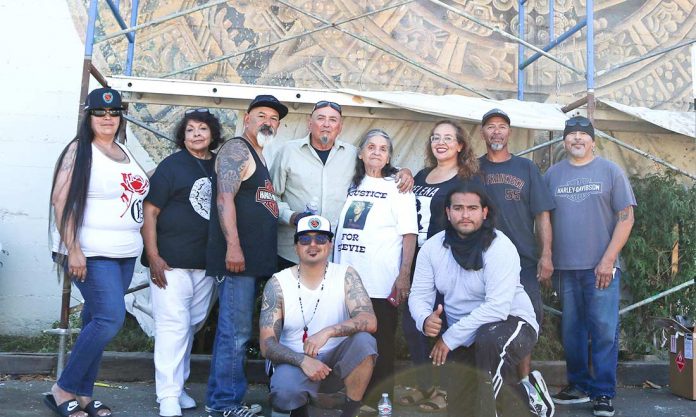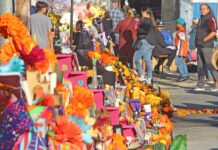
By Cesar Gamboa
Nestled in the southern Santa Clara Valley, at the crossroads of the Great Central Valley, Bay Area, “Silicon Valley,” the Monterey Peninsula, and Salinas Valley sits Gilroy. Gilroy serves as an ideal place for tourism, agriculture, high technology and healthy U.S. Patriotism.
When the Declaration of Independence was signed in 1776, Coronel Juan Bautista de Anza’s expedition into Alta California explored what was to become the Garlic Capital of the World. It is in this location that Gilroy’s Mexican American community is making an effort to restore a mural that celebrates diversity while promoting unity.
John Gilroy became the first naturalized English-speaking settler to Alta California. In the span of his lifetime, Mexico gained its independence from Spain in 1821 and California became incorporated into the union in 1850. A uniquely rich multicultural history has always been prevalent here as can be noted in the works of John Steinbeck who references the Gavilan Hills and called our home “the Valley of Heart’s Delight.” Chinese immigrants also established themselves within the community as two blocks of Monterey Street south of Seventh Street in Gilroy were once home to some of the Bay Area’s first “Chinatowns.”
Culture is not static nor fixed to one particular locale. It moves alongside history as circumstances adjust. In recent decades time has taken a toll on historical landmarks, such as this mural which serves as a testament to Gilroy’s Chicano identity.
Across the train station, at 40 Hornlein Court, rests a depiction of what is popularly known as the Aztec Calendar. This work of art goes back to the 1970s and was organized by a local youth empowerment program which provided academic and extracurricular opportunities to youth from migrant farmworker families.
Some of the same youth who assisted in the mural are now returning with more insight and wisdom than before to preserve this piece of local heritage. Jimmy Castañeda, a local resident, was one of the youth who participated in the original mural which has been featured in magazines, newspapers, television shows and even Gilroy High’s 1981 yearbook. In the words of Castañeda, “This is our history, I want to see it thrive.”
Castañeda is joined by non-profit organizations such as CARAS, several downtown businesses, and the City of Gilroy Public Arts Committee, who have already come together to clean and apply protective coating to the mural. Another phase will begin this summer.
This entails inviting some of the original artists such as Ray Romo, Johnny Nunez and Salvador Holguin along with new artists such as Guilermo Aranda who has completed more than 80 murals. The restoration of this mural goes beyond the physical, as it reaffirms a cultural identity with a gesture of community cooperation.
This is an opportunity for the residents of Gilroy to support a local initiative. It is also an opportunity for us to contact the city council and assemble support.
The currently proposed mural will include select spaces for patrons and donors to include their cause. It also is an opportunity to reach out to our Sister Cities in a spirit of global unity and intercultural exchange.
As our communities enter the fourth month of Covid-19 lockdowns, we have seen the interconnectedness of globalization. Let’s keep Gilroy Strong.













